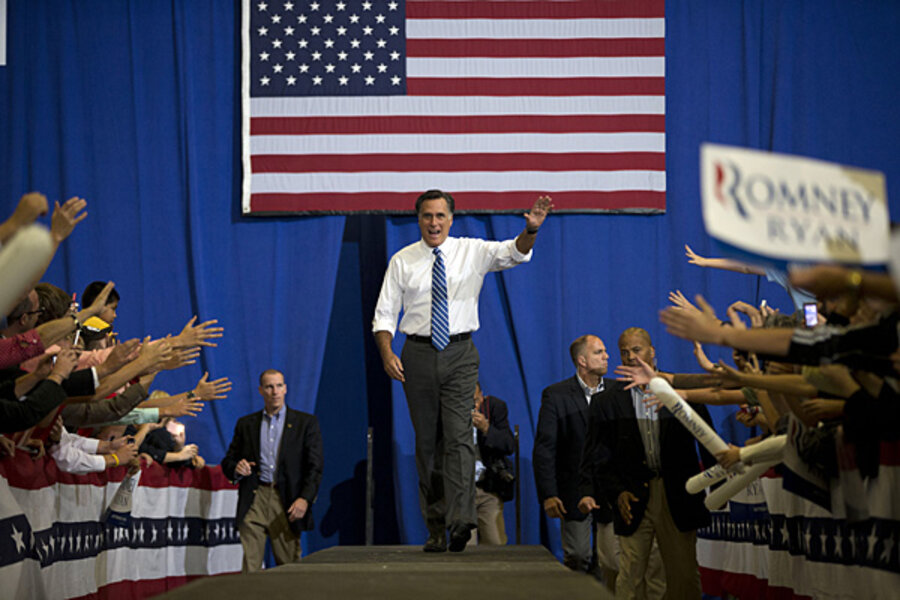Romney plan: Rich to pay same share of taxes? Or $230,000 less?
Loading...
President Obama says Governor Romney will cut taxes for high-income households by $250,000. Romney counters that under his plan, the rich will pay the same share of taxes they do today. Who’s right?
It all depends on what plan you are looking at and what you are measuring.
The first problem is the two candidates are talking about two entirely different plans. Obama is criticizing a Romney proposal that includes only tax cuts and has none of the offsetting revenue raisers that he promises, but does not describe. Romney, by contrast, is talking about a fully-paid-for plan though he won’t say exactly what it would look like.
But there is a second problem as well. The two men are looking at taxes in vastly different ways that may (not accidently) baffle voters.
How can somebody both pay more and pay the same? It isn’t alchemy. Instead, it is all about what you are measuring. To understand what the candidates are saying, you have to listen carefully to their language. Obama is talking about tax liability. Romney is talking about tax shares.
Obama frames his argument in terms of the actual tax bill an individual pays. He says Romney has proposed major reductions in taxes for high-income households. And, based on what Romney has been willing to tell us about his plan, Obama is roughly correct. The governor has proposed to extend the 2001-2003 tax cuts, then cut rates by 20 percent across the board, eliminate taxes on investment income for those making $200,000 or less, and repeal the estate tax and the Alternative Minimum Tax.
The Tax Policy Center has found that relative to a world where all the 2001-2003-2010 tax cuts have expired, Romney would cut taxes for those in the top 1 percent by an average of about $232,000 in 2015. Excluding the benefits of making today’s tax law permanent, the top 1 percent would pay about $150,000 less, TPC figures.
Romney insists he will pay for all of those tax cuts (beyond making the 2001-2003 cut permanent) with tax increases and unspecified economic growth. In some fashion, those revenue-raisers would include limits on existing tax preferences, such as deductions, credits, and exclusions.
While he provides no details, Romney says—among other things—that the net effect of his tax cuts and revenue raisers is A) no increase in the deficit and B) high-earners will pay the same share of taxes as they do today. Thus, Romney is talking about the percentage of total taxes people in a particular income class pay, not the amount of tax they pay.
TPC figures the top 1 percent will pay about 27 percent of all federal taxes this year. Thus, Romney is implying that, when all is said and done, the top one percent will still pay about 27 percent of all federal taxes. But, of course, if they are going to get a big tax cut and continue to pay 27 percent of all federal taxes, others will have to get a big tax cut too.
Interestingly, when Romney talks about the middle-class, he changes his language and seems to focus on tax payments, not tax shares.
Still, unless Romney wants to pay for these tax cuts with big spending cuts, or unless his tax cuts generate implausibly fast economic growth, this implies a substantial increase in the federal deficit—which Romney has vowed to avoid.
Which number is better, or at least more descriptive—Romney’s or Obama’s? That depends on what story you are trying to tell.
If you want to argue that high-income households pay an outsized percentage of federal taxes, which the GOP often does, you focus on tax shares. If you care about how much tax individuals pay, as Democrats often do, you might focus on how much of a tax cut, on average, somebody in a particular income class would get from Romney’s plan.
Neither is wrong, but each candidate is putting his own self-serving spin on the matter. As always, when these politicians speak, you need to listen very, very carefully to what they are saying.





